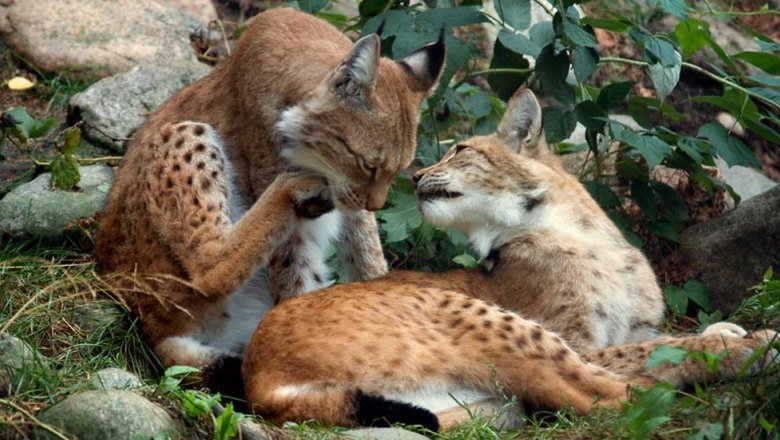Lynxes are solitary animals, except during the mating season
Males have slightly larger territories than females, and the territory of a male may overlap those of several females. While the lynx is the most active at dusk and during the night, it is sometimes also out and about during the day. When at rest, the lynx prefers inaccessible terrain with boulder fields and hills, and when threatened, it can escape by climbing a tree.
Due to the keen senses of the lynx, humans rarely see them in the wild. The lynx has no natural predators but it steers clear of wolves.
Reproduction
The mating season of the lynx is in February and March, and the gestation period is 63 to 72 days. The lynx has a litter of 1 to 4 cubs, most commonly 2 to 3. Both the mother’s age and the availability of food affect the number of cubs, and the first litters of a female are usually smaller. The cubs live with their mother in a family group and are dependent on her until the following spring.

